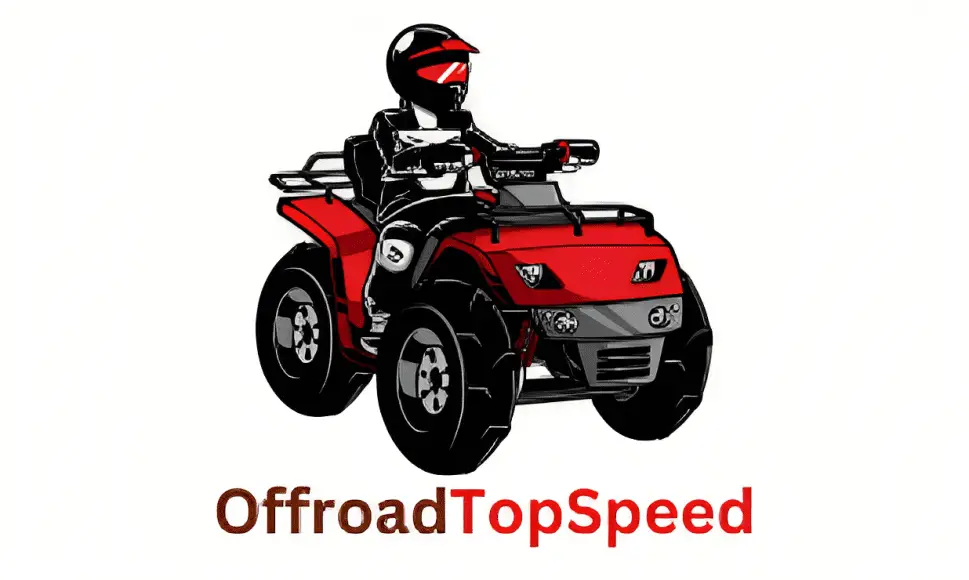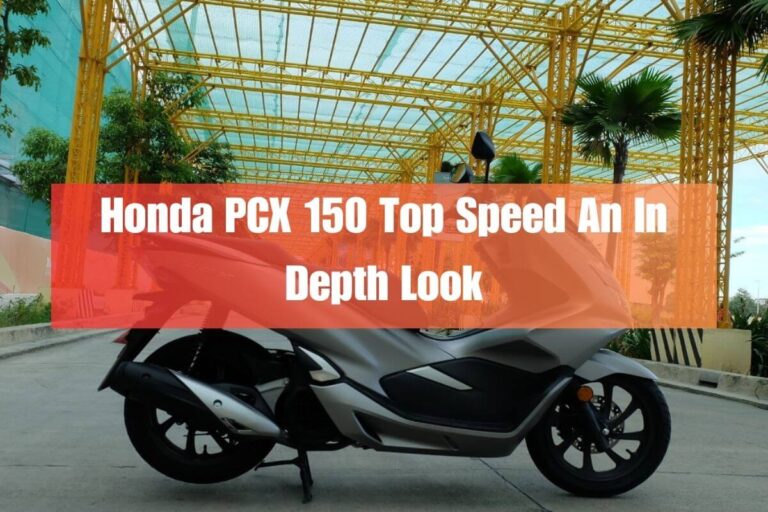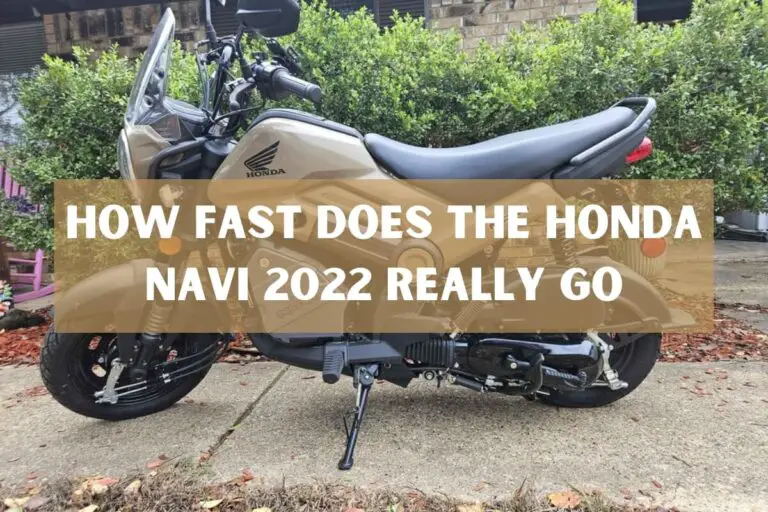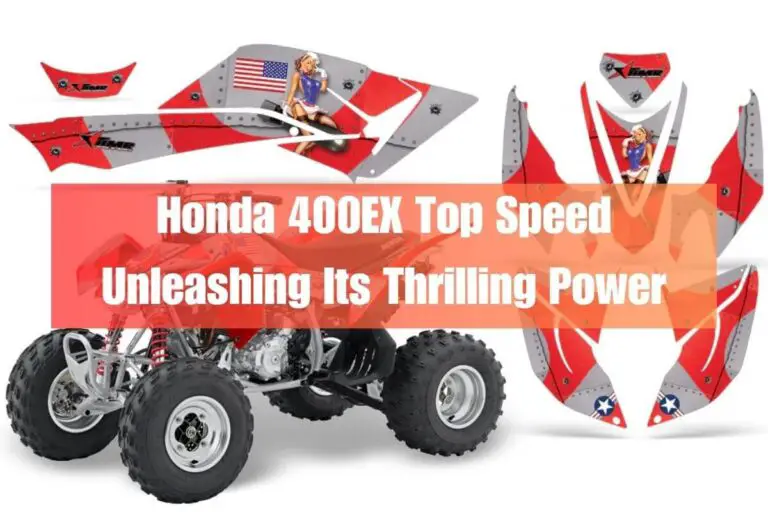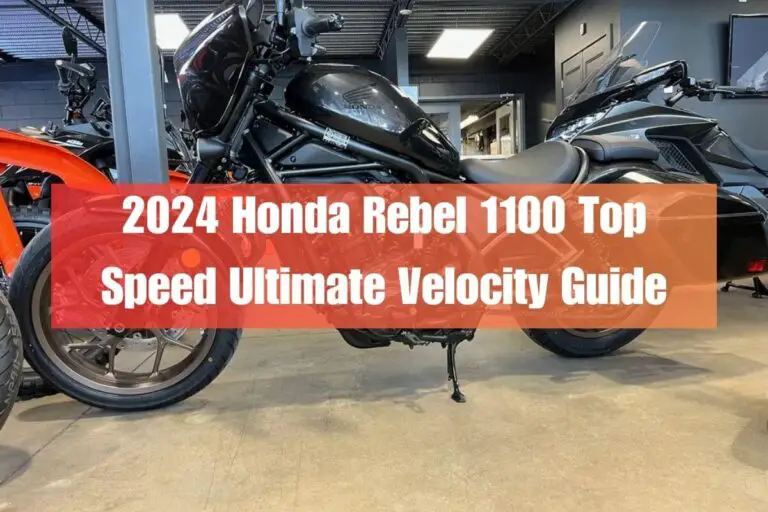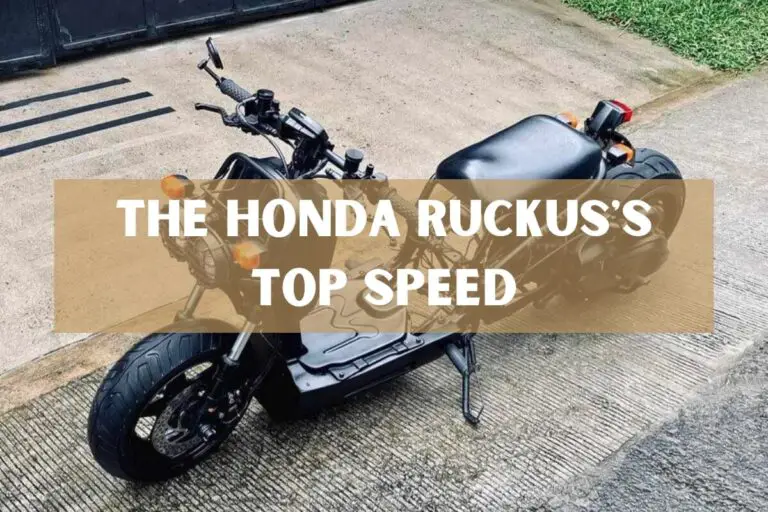Honda CBR300R’s Top Speed: Unlocking Its Potential
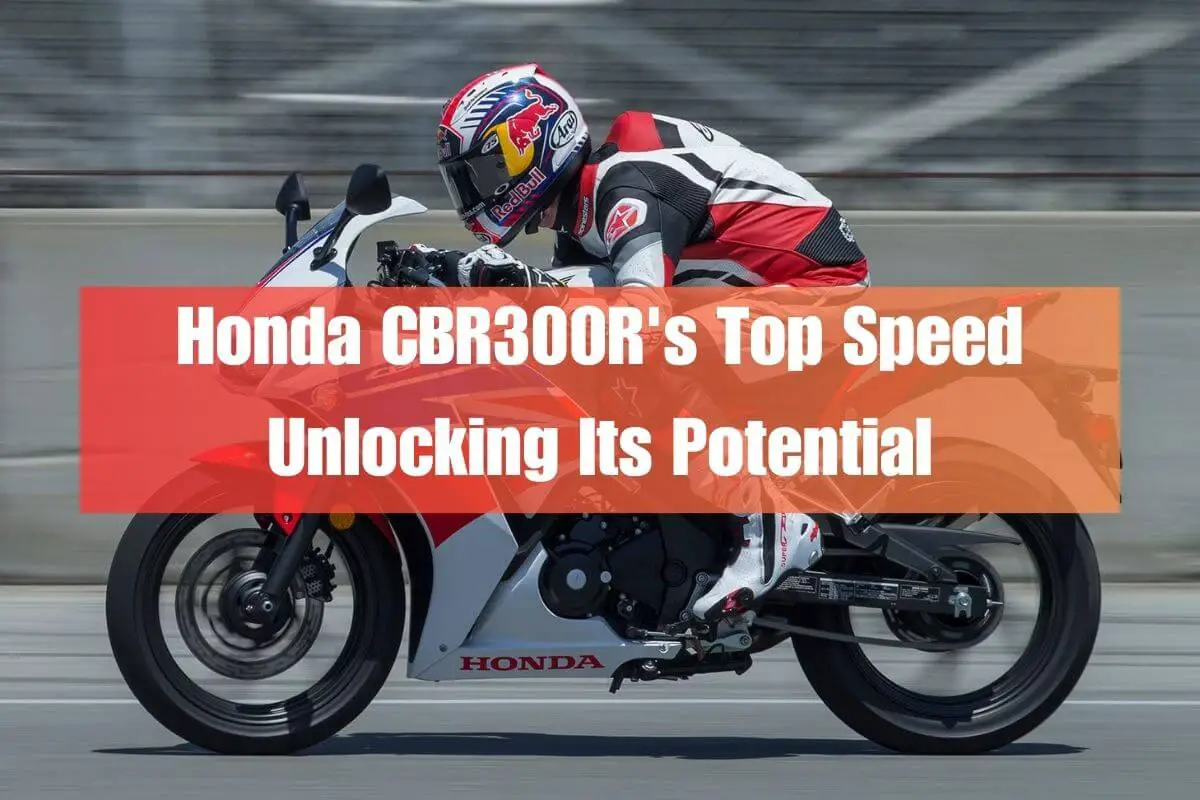
Are you a thrill-seeker looking for an affordable and nimble sportbike that can satiate your need for speed? The Honda CBR300R might just be the perfect ride for you. With its compact size, lightweight design, and rider-friendly power delivery, this entry-level motorcycle offers an exhilarating riding experience, even at its top speed. Let’s explore the impressive the honda cbr300r top speed, acceleration figures, and explore ways to unlock its full potential.
Highlights of the Honda CBR300R
The Honda CBR300R is a compact sportbike designed to cater to the needs of both novice and experienced riders alike. Its 286cc liquid-cooled single-cylinder engine provides a smooth and tractable power delivery, making it easy to control and maneuver, even in tight city traffic. Despite its modest displacement, the CBR300R packs a punch, delivering 30.4 horsepower and 20 lb-ft of torque.
One of the standout features of this bike is its agile handling. Thanks to its lightweight construction and responsive chassis, the CBR300R is incredibly nimble and flickable, allowing you to carve through twisty roads with ease. Its compact size and low seat height further contribute to its user-friendliness, making it an excellent choice for riders of varying heights and experience levels.
Top Speed and Acceleration Figures
Now, let’s get to the heart of the matter – the Honda CBR300R’s top speed. According to Honda, this peppy little sportbike can reach a top speed of around 98 mph (158 km/h). While this might not seem earth-shattering compared to larger displacement bikes, it’s important to remember that the CBR300R is designed for city commuting and canyon carving, not all-out speed runs.
In terms of acceleration, the CBR300R can go from 0 to 60 mph (0 to 96 km/h) in approximately 6 seconds, which is respectable for its class. It can also cover the quarter-mile in around 15 seconds, which is no slouch for a 286cc machine.
Here’s a quick glance at some key specifications and features:
| Specification | Value |
|---|---|
| Engine | 286cc liquid-cooled single-cylinder |
| Power Output | 30.4 hp |
| Torque | 20 lb-ft |
| Transmission | 6-speed manual |
| Curb Weight | 364 lbs (165 kg) |
| Top Speed | ~98 mph (158 km/h) |
| 0-60 mph | ~6 seconds |
| Quarter Mile | ~15 seconds |
Factors Influencing Top Speed
While the CBR300R’s top speed might not be its primary selling point, it’s still an impressive feat for a bike of its size and displacement. Several factors contribute to its ability to reach and maintain high speeds, including:
- Engine Displacement and Power Output: The 286cc single-cylinder engine provides a good balance of power and manageability, allowing the CBR300R to reach respectable top speeds without overwhelming new riders.
- Aerodynamics and Weight: The CBR300R’s sleek, sportbike-inspired bodywork and lightweight construction help to reduce wind resistance and improve its aerodynamic efficiency, contributing to its top speed capabilities.
- Gearing and Final Drive: The 6-speed transmission and optimized gearing ratios ensure that the engine’s power is efficiently transferred to the rear wheel, maximizing acceleration and top speed potential.
- Rider’s Skill Level: Like any motorcycle, the CBR300R’s top speed performance is heavily influenced by the rider’s skill level, riding technique, and confidence at high speeds.
Owner Reviews and Experiences
To get a better understanding of the CBR300R’s real-world performance, let’s take a look at what owners have to say about its top speed capabilities:
“The CBR300R might not be the fastest bike out there, but it’s more than enough for a beginner like me. It’s nimble, lightweight, and has just the right amount of power to have fun without getting into too much trouble.” – John, CBR300R owner.
“I commute on my CBR300R every day, and it’s a blast to ride. It’s quick off the line, and once you get used to the power delivery, you can safely hit some pretty decent speeds on the highways.” – Sarah, experienced rider.
While most owners praise the CBR300R’s agility and user-friendliness, some experienced riders have expressed a desire for more top-end power and acceleration:
“Don’t get me wrong, the CBR300R is a great bike, but I’ve started to outgrow its performance capabilities. I might upgrade to a larger displacement model soon for more top speed and passing power.” – Mike, experienced rider.
How Does It Compare to Rivals?
The entry-level sportbike segment is quite competitive, with several manufacturers offering compelling alternatives to the Honda CBR300R. Let’s take a look at how its top speed stacks up against some of its closest rivals:
- Kawasaki Ninja 400: With its 399cc parallel-twin engine producing 44 horsepower, the Ninja 400 is a step up in terms of outright performance. It can reach a top speed of around 115 mph (185 km/h), making it a more highway-capable option.
- Yamaha YZF-R3: Powered by a 321cc parallel-twin engine producing 42 horsepower, the Yamaha R3 can hit a top speed of around 110 mph (177 km/h), outpacing the CBR300R’s top speed by a decent margin.
- KTM 390 Duke: Despite its smaller 399 cc single-cylinder engine, the KTM 390 Duke packs a punch with 43 horsepower. Its top speed is rated at around 105 mph (169 km/h), making it a strong contender in the segment.
While the CBR300R might not have the outright top speed of some of its rivals, it makes up for it with its affordability, fuel efficiency, and beginner-friendly nature. For many riders, these factors outweigh the need for blistering straight-line speed.
Best Modifications for More Speed
If you’re looking to eke out a few extra miles per hour from your CBR300R, there are several modifications you can consider:
- Exhaust Systems: Aftermarket slip-on exhausts or full exhaust systems can improve airflow and reduce back-pressure, resulting in a slight boost in power and top speed.
- Air Filters: High-flow air filters can improve airflow to the engine, potentially increasing horsepower and top-end performance.
- Sprockets and Gearing Changes: Installing a smaller front sprocket or larger rear sprocket can alter the final drive ratio, effectively increasing your top speed at the expense of acceleration.
- Lighter Wheels and Bodywork: Replacing stock components with lighter aftermarket parts can reduce overall weight, improving acceleration and top speed potential.
- Engine Remapping/Tuning: Professional engine tuning and remapping can optimize the fuel and ignition maps, extracting more power and performance from the stock engine.
It’s important to note that modifications should be undertaken with caution and by qualified professionals to ensure safety and maintain warranty coverage.
Pros and Cons of the CBR300R
Like any motorcycle, the Honda CBR300R has its strengths and weaknesses. Here’s a quick rundown of the pros and cons:
Pros:
- Affordable pricing, making it accessible to a wide range of riders
- Excellent fuel economy, averaging around 60-70 mpg
- Beginner-friendly power delivery and lightweight handling
- Nimble and flickable, perfect for tight city streets and canyon carving
- Low seat height and compact size, ideal for shorter riders
Cons:
- Modest top speed and acceleration compared to larger displacement bikes
- Limited pillion accommodation and comfort for long-distance touring
- Non-adjustable suspension, which can be a drawback for more aggressive riding
Top Alternatives to Consider
While the Honda CBR300R is an excellent choice for many riders, it’s always worth exploring other options to find the perfect fit. Here are some top alternatives to consider:
- Kawasaki Ninja 400: With its potent 399cc parallel-twin engine and aggressive styling, the Ninja 400 offers a significant performance upgrade over the CBR300R.
- Yamaha YZF-R3: The R3’s 321cc parallel-twin engine and sporty ergonomics make it a great choice for riders seeking more top-end performance without breaking the bank.
- KTM 390 Duke: KTM’s 399cc single-cylinder Duke packs a punch with 43 horsepower, offering a unique blend of performance, agility, and aggressive styling.
- CFMOTO 300 NK: The 300 NK from CFMOTO is an affordable and capable alternative, powered by a 292cc liquid-cooled parallel-twin engine and boasting modern styling.
- BMW G 310 R: For those seeking a more premium brand experience, the G 310 R from BMW offers a smooth 313cc single-cylinder engine and a well-balanced chassis for city commuting and weekend adventures.
While these alternatives may offer varying levels of performance and features, it’s essential to consider your riding needs, budget, and personal preferences before making a decision.
Pricing, Availability, and The Right Buyer
The Honda CBR300R is currently available at Honda dealerships across the United States, with an MSRP of $4,899 for the non-ABS model and $5,099 for the ABS-equipped version. It’s important to note that pricing may vary depending on your location and any available dealer incentives or discounts.
So, who is the ideal buyer for the Honda CBR300R? This versatile little sportbike is an excellent choice for:
- Beginner Riders: The CBR300R’s user-friendly power delivery, lightweight handling, and approachable size make it a fantastic option for those looking to learn and hone their riding skills.
- Commuters: With its excellent fuel efficiency, nimble handling, and affordable pricing, the CBR300R is a practical and economical choice for urban commuters.
- Weekend Warriors: If you’re seeking a fun and capable bike for canyon carving and spirited weekend rides, the CBR300R’s agile handling and accessible performance make it a great option.
- Budget-Conscious Riders: For those working with a limited budget, the CBR300R offers a compelling blend of performance, styling, and value for money.
However, if you’re primarily focused on outright top speed and acceleration, or if you plan to embark on frequent long-distance touring trips, you may want to consider some of the alternatives mentioned earlier.
Common Issues and Solutions
Like any motorcycle, the Honda CBR300R is not immune to potential issues. Here are some common problems reported by owners and their respective solutions:
1. Chain Noise and Wear
- Issue: Some owners have reported excessive chain noise and premature wear, which can be exacerbated by low-quality chain lubrication and improper maintenance.
- Solution: Regularly clean and lubricate the chain using a high-quality chain lube. Consider upgrading to a higher-quality chain and sprockets for improved longevity.
2. Battery Drainage
- Issue: The CBR300R’s battery can drain quickly, especially if the bike is not ridden regularly or stored for extended periods.
- Solution: Use a battery tender or trickle charger to maintain the battery’s charge during storage. Consider upgrading to a higher-capacity battery for added peace of mind.
3. Suspension Limitations
- Issue: The non-adjustable suspension can be a drawback for more aggressive riding or when carrying a passenger or luggage.
- Solution: Consider upgrading to aftermarket suspension components or investing in a professional suspension setup to better suit your riding style and needs.
4. Lack of Wind Protection
- Issue: Some riders have reported feeling exposed to wind buffeting at higher speeds due to the CBR300R’s compact windscreen.
- Solution: Install an aftermarket taller windscreen or consider adding additional wind protection accessories, such as handguard extensions or a larger flyscreen.
Regular maintenance and addressing issues promptly are crucial to ensure the longevity and optimal performance of your Honda CBR300R.
Frequently Asked Questions
How fast can the Honda CBR300R go from 0 to 60 mph?
The CBR300R can accelerate from 0 to 60 mph (0 to 96 km/h) in approximately 6 seconds, which is respectable for its class and displacement.
Is the CBR300R suitable for highway riding?
While the CBR300R is capable of highway speeds, its modest top speed of around 98 mph (158 km/h) means it may not be the most comfortable or confidence-inspiring option for sustained high-speed cruising.
How does the fuel efficiency of the CBR300R compare to other bikes?
Thanks to its efficient 286cc engine, the CBR300R boasts excellent fuel efficiency, averaging around 60-70 mpg (25-30 km/l), making it an economical choice for commuting and urban riding.
Can the CBR300R be used for track days or racing?
While the CBR300R is not designed specifically for track use, it can be a fun and affordable option for beginner-level track days or entry-level racing events. However, more significant modifications may be necessary to extract its full potential on the track.
Is the CBR300R suitable for taller riders?
The CBR300R’s compact size and low seat height of 30.7 inches (780 mm) may not be the most comfortable option for taller riders, especially those over 6 feet (1.83 m). It’s always advisable to sit on the bike and assess the ergonomics before making a purchase.
Final Thoughts
The Honda CBR300R is a remarkable entry-level sportbike that strikes a perfect balance between performance, affordability, and user-friendliness. While its top speed of around 98 mph (158 km/h) might not set any land speed records, it’s more than enough for most riders to have an exhilarating and confidence-inspiring experience.
With its agile handling, lightweight construction, and rider-friendly power delivery, the CBR300R excels as a commuter, canyon carver, and weekend warrior. Its affordability and excellent fuel efficiency further solidify its appeal, making it an attractive option for budget-conscious riders.
However, if blistering top speeds and outright acceleration are your primary priorities, you may want to consider some of the larger displacement alternatives mentioned earlier, such as the Kawasaki Ninja 400 or the Yamaha YZF-R3.
Ultimately, the Honda CBR300R is a fantastic choice for those seeking an affordable, versatile, and enjoyable riding experience without sacrificing practicality or accessibility. With its well-rounded package and Honda’s renowned reliability, the CBR300R is sure to put a smile on your face every time you twist the throttle.
